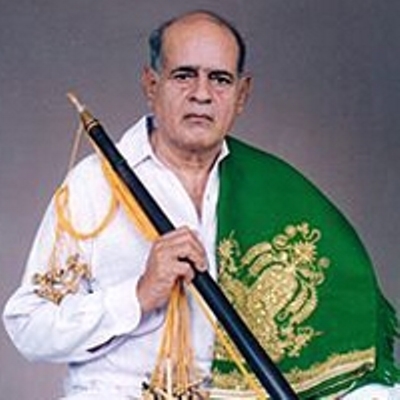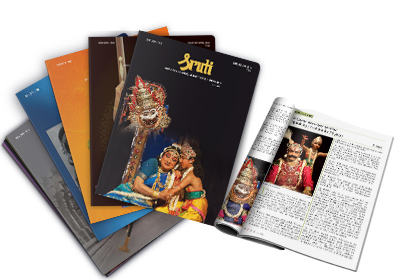
Sheikh Chinna Moula (12 May 1924-13 April 1999) was one of the finest vidwans belonging to the Chilakaluripeta school of nagaswaram music, ‘founded’ by Sheik Nabi Sahib, born in 1726, in the Narasaraopet Taluk of Guntur district. Pedda Moula Sahib (born 1890) and Chinna Moula Sahib (born 1893) were the most prominent representatives of the parampara in the 20th century.
Born in such a nagaswaram family of several exponents of the instrument through the generations to Sheikh Kasim Sahib and Beebi Jan, Chinna Moula took to the instrument with great enthusiasm even as a child, held in thrall by the magic of TN Rajaratnam’s nagaswaram music, which he heard on gramophone records. With role models in grandfather Sheik Abdullah, uncle Madar Sahib and father Kasim Sahib, Chinna Moula had his frist lessons from Madar Sahib and Adam Sahib. He started performing very early, but both his father and he felt that he should go to Tamil Nadu from his native Karavadi, to acquire the Tanjavur bani he so admired in Rajaratnam. He travelled to Nachiarkovil, where his father had identified NK Duraikannu Pillai as the ideal teacher for him. The brothers Rajan and Duraikannu Pillai were respected vidwans who had been performing extensively in India and Ceylon from 1934. Their exquisite alapana essays had impressed no less an artist than Rajaratnam, For two months every year Chinna Moula trained for nine years with Duraikannu Pillai, who was all praise for his karpoora buddhi. While at Nachiarkovil, Chinna Moula refused concert offers as he was there as a student.
Chinna Moula’s first performance in Tamil Nadu was at Salem in 1960. By now he was generally being addressed as Chinna Moulana in his adopted state. Earlier accompanied on the tavil by Emani Raghavayya or Annavarapu Basavayya, Moula now started to team up with Tattamangalam Ponnuswami, known as Ravaneeswara, on the special tavil. He came under the influence of violinist Ramanathapuram Ganesa Pillai, who helped his concert career substantially. To be near him, Moula moved to Srirangam in 1964, where he bought a house. Though some local musicians were hostile to him, as a Muslim and an outsider, many others had no problems with him. His main tavil partner was Valangaiman A Shanmugasundaram Pillai accompanied him for 30 years. Initially not allowed at temple concerts, Moula was unfazed. His ancestors had performed at Hindu temples for generations in Andhra, and he believed he was protected by Ranganatha swami. To him and his family music was their true religion, though they were practising Muslims who followed all the rituals and festivals their religion mandated, and Islamic rites at their weddings. They observed Ramzan, Bakrid and other Muslim festivals, but also Vinayaka Chaturthi and Deepavali. “Rama is my ishta devata,” Chinna Moula said.
Chinna Moula married Beebi Jan, a namesake of his mother, and their daughter Jan Beevi married Sheikh Suban Sahib, one of two sons of Mastan Sahib of Enugupalem. Suban, who was a disciple of Chinna Moula, and Jan Beevi have five sons, Mastan, Kasim, Babu, Chinna Kasim and Ali saheb, all but bthe last named nagaswara exponents.
Known for his extreme concern for mastering the sahitya of the kritis he played and the beauty of his raga alapana, Moula sought perfection in all aspects of music. He modified the fingering technique, perhaps by accident, when he interchanged the positions of the fingers of the right and left hands on the holes of the nagaswaram from the traditional way of placing the left hand on the upper holes and the right hand on the lower holes, as recommended in the Sangeeta Ratnakara. His grandson Kasim too follows Moula’s method of fingering.
Founding his nagaswaram school Sarada Nagaswara Sangeeta Ashram in Srirangam, he taught there in the evenings, while singing and memorizing new songs in the mornings, with the help of notebooks where he wrote down all the songs.
Chinna Moula travelled extensively in India and abroad, and received several awards, besides teaching at the Raja’s Government Music College at Tiruvaiyaru. Among his many disciples were Sheikh Mahaboob Subhani, his wife Kalishabi Mahaboob, Sheikh Abdulla, Sheikh Mastan, Sheikh Kasim, Babu and Chinna Kasim. Though Chinna Moula left is in 1999, his bani is alive and kicking in his sishyas and their sishyas.


